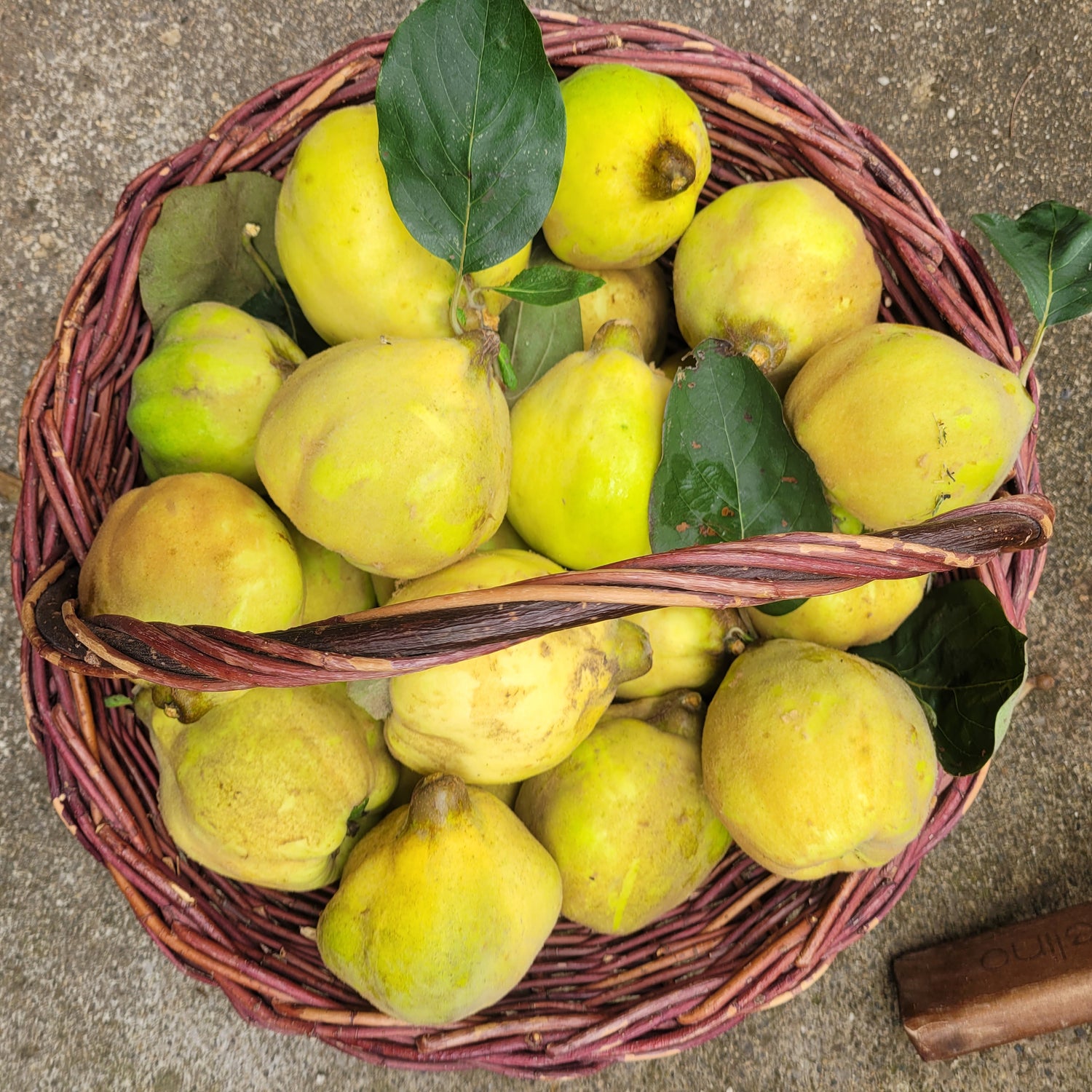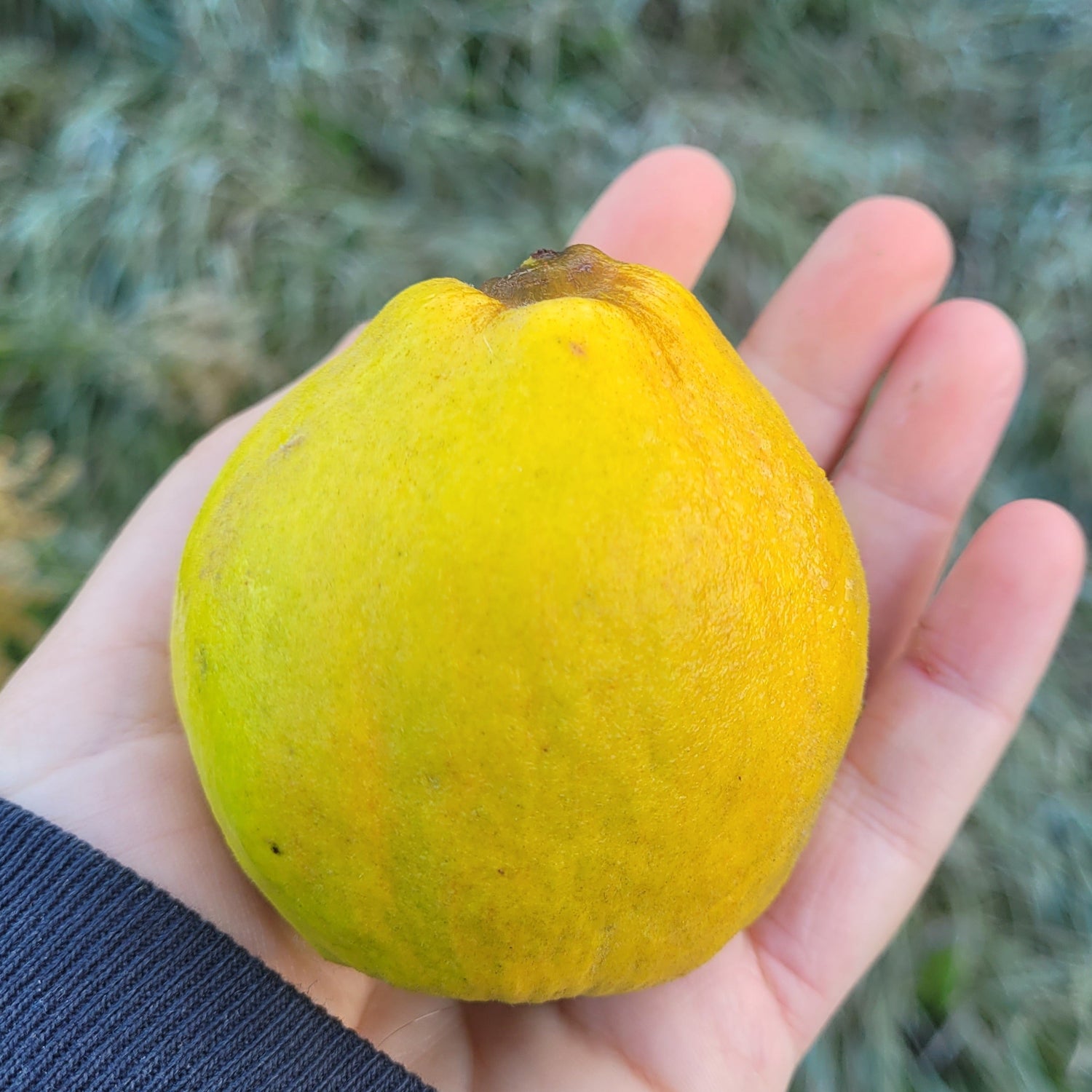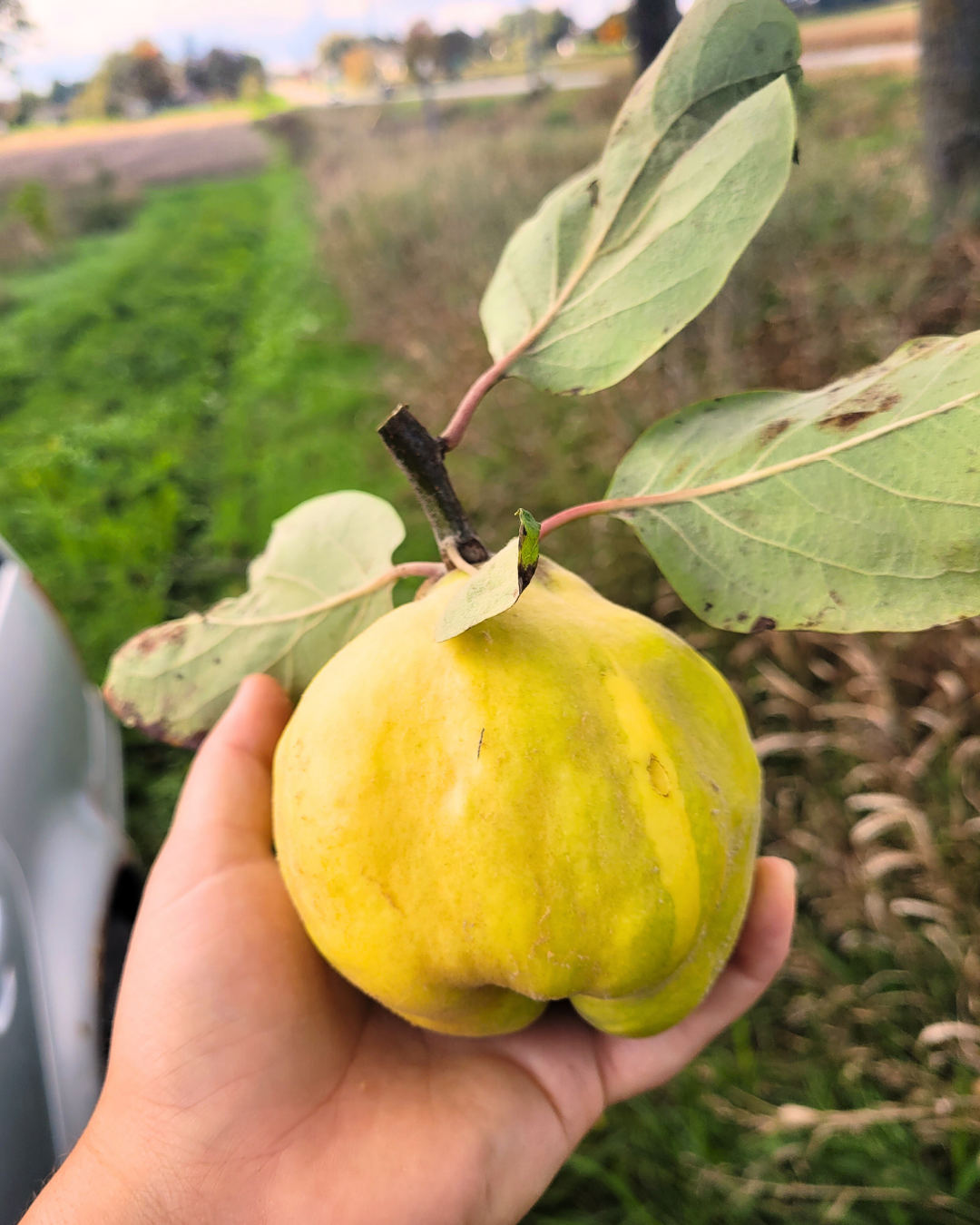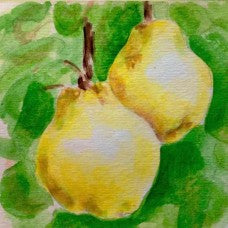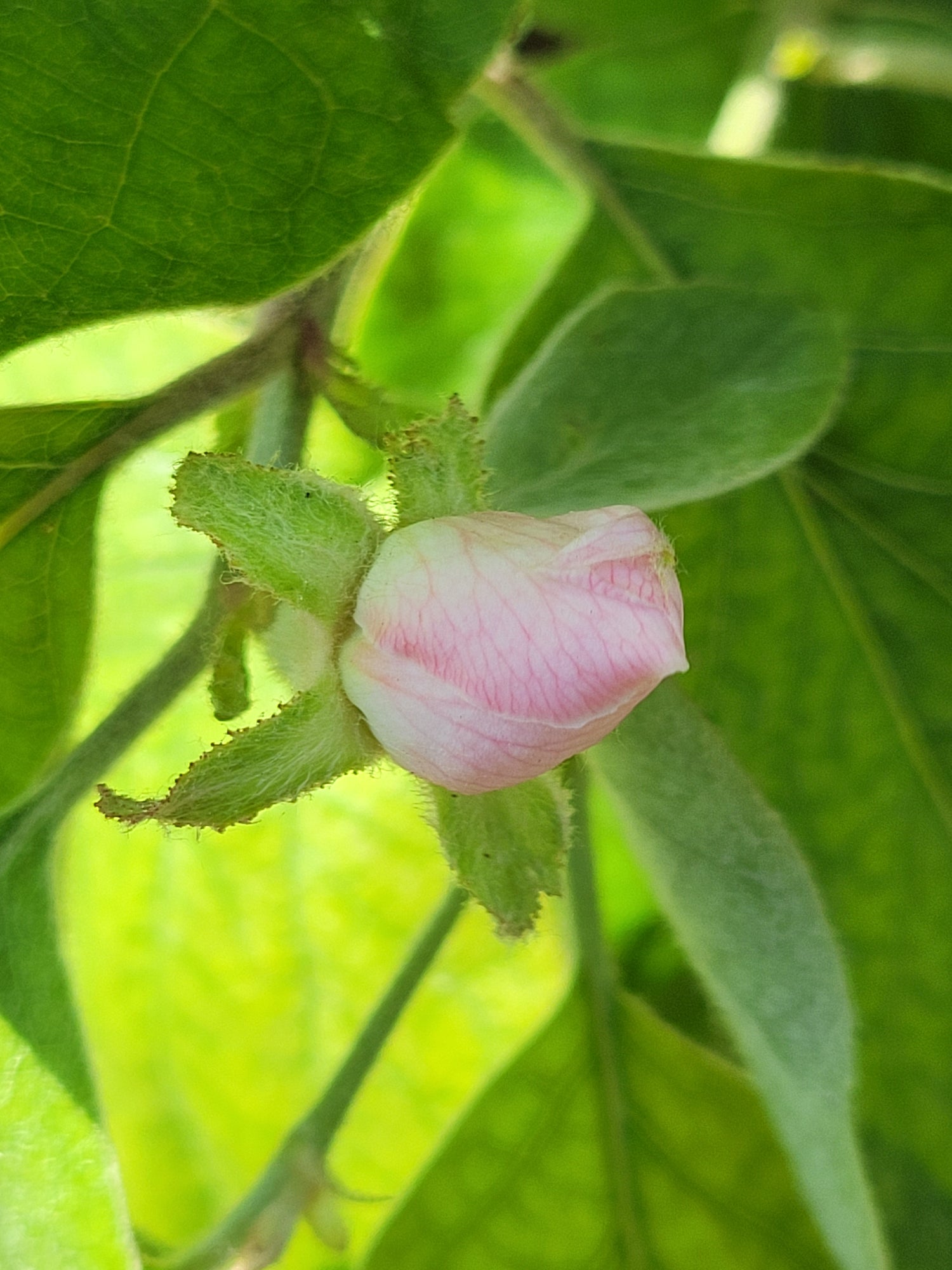Quince Trees
Cydonia oblonga
Quince is a lesser known fruit with a strong, tart flavour that is best used in savoury dishes, baking, and preserving. Its unique flavour can be added to applesauce or cider blends for a fun tasting experience! Although less cold hardy than apples and pears, the quince varieties we offer do well in our area. Quince trees are self-pollinating.
Sort by:
6 products
6 products
History: Cooke's Jumbo originated as a random mutation of an existing quince variety in an orchard in Dinuba, California. It was brought to the attention of the L.E. Cooke Company, for which it was later named, and introduced commercially in 1972.
Why We Grow It: The fruit produced by Cooke’s Jumbo are exceptionally large with greenish-yellow skin and firm white flesh. They are not generally eaten raw, but rather used for baking, jellies, or candied. This is one of the hardiest varieties of quince available.
History: Ernie's Favourite was grown as a seedling on a homestead in Mt. Pleasant, ON. It is believed that the seed came from Eastern Europe but it has thrived in our climate for decades and been a family favourite for the original growers. When we asked the farmer what he wanted to call the variety, he requested we name it 'Ernie's Favourite' after his father.
Why We Grow It: Ernie's Favourite produces a medium-sized quince with good flavour. It has dependable crops and does well in our climate - a good, tried-n-true variety!
History: Little is known about the history of Giant of Zagreb aside from the fact that it originated in the former country of Yugoslavia. Its country of origin suggests it was developed some time in the 20th century since the nation only lasted from 1918-1992. It was named for Zagreb, a major Yugoslavian city that is now the capital of Croatia.
Why We Grow It: The fruit of Giant of Zagreb are large with greenish-yellow skin and firm white flesh. The flavour is mild for a quince, although this isn't saying much. For those who have never tasted quince, it is a sour-raspberry flavoured experience not soon forgotten. As the flavour profile suggests, it is best used in baking, jellies, sauces (quince sauce or added to apple sauce), or candied. This is one of the hardiest varieties of quince available.
Available only for pick-up at nursery.
Species: Cydonia oblonga
History: The seedlings were sprouted from seeds sourced from an old mother tree on a local farm. The previous owners have enjoyed the fruit for generations.
Why We Grow It: A clearly reliable variety that produces large crops of lovely fruits, it would have been a shame not to propagate it for others to enjoy. Like all quince, the fruit from your seedlings are best used for cooking, baking, and preserving since the intense, tart flavour is a bit much when eaten fresh.
History: The history of Quince of Portugal is largely unknown aside from the fact that it was introduced to England in the early 1600s.
Why We Grow It: This quince is often considered to have the best flavour of all quinces. On top of that, the impressive fruits of this variety can weigh up to 1 lb and are juicier than most other cultivars. When ripe, this quince cooks to a lovely crimson coloured puree. It is best to store the fruit indoors for a couple weeks before eating it.
Species: Cydonia oblonga
History: The seedlings were sprouted from seeds sourced from Ontario.
Why We Grow It: By growing quince from seeds in our area, we hope these seedlings will be a little more cold hardy. Like all quince, the fruit from your seedlings are best used for cooking, baking, and preserving since the intense, tart flavour is a bit much when eaten fresh.
We have seedlings of the following varieties:
- Ernie's Favourite - A favourite from a homestead in Mt. Pleasant that has produced fruit for decades. It performs well in our climate.
- Quince Seedling - The seedlings were sprouted from seeds sourced from an old mother tree on a local farm. The previous owners have enjoyed the fruit for generations, proving that this is a nice, reliable variety.




